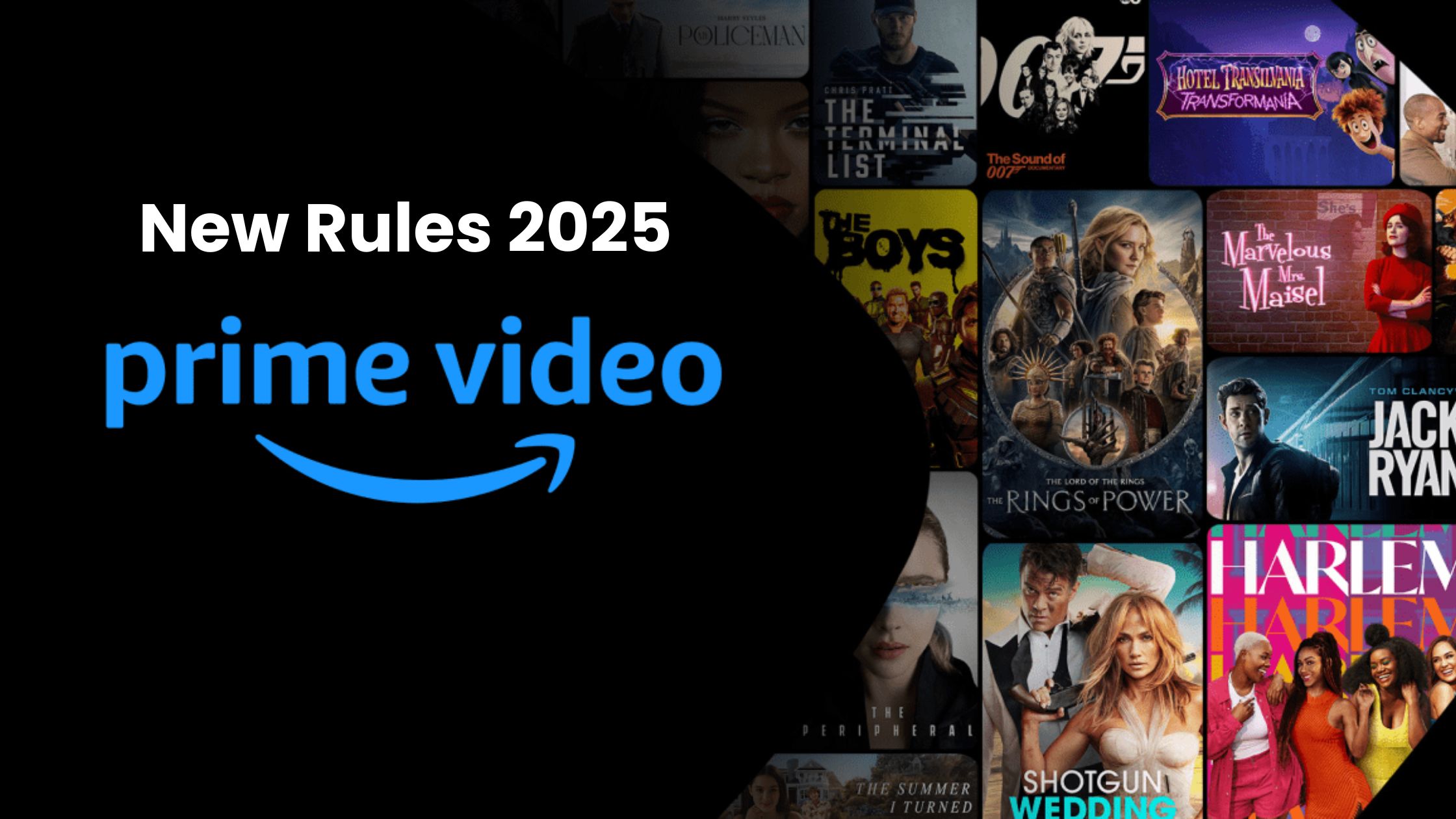Amazon Prime Video is making changes to its subscription plans in India, introducing new device limitations starting January 2025. These updates could impact how subscribers share their accounts with family and friends, particularly for those who prefer streaming on multiple TV devices. Let’s dive into the details of the revised rules, their implications, and what users need to consider moving forward.
Key Changes in Amazon Prime Video Subscription Rules
Device Limitations
Amazon Prime Video will now allow subscribers to log in on up to five devices. However, only two of these devices can be TVs. This means if users want to stream Prime Video on a third TV, they’ll need to purchase an additional subscription.
While this change doesn’t restrict the total number of devices drastically, the focus on limiting TV devices could affect users who primarily watch OTT content on larger screens.
Amazon Prime Video: Communication with Users
Amazon has begun informing its subscribers about the updated rules through emails. The messages detail the new device-sharing policies, ensuring users are aware of the changes before they take effect.
Implications for Shared Accounts
Impact on Families and Groups
Many subscribers share their Prime Video accounts with friends and family, often on multiple TV screens. The new restrictions could complicate these arrangements, particularly for larger households or groups accustomed to streaming on three or more TVs.
For instance, families with TVs in multiple rooms or individuals sharing accounts across households may need to reassess how they use Prime Video.
A Trend Among Streaming Platforms
Amazon’s decision mirrors a broader trend in the streaming industry. Other platforms like Netflix and Disney+ Hotstar have already implemented similar device-sharing restrictions.
- Netflix: Limits the number of devices depending on the subscription plan. It also introduced a feature requiring users to pay extra for sharing accounts across households.
- Disney+ Hotstar: Offers tiered plans with varying device limits to suit different user needs.
These changes aim to encourage individual subscriptions and reduce the financial impact of account sharing on streaming platforms.
Amazon Prime Video Subscription Pricing in India
Current Plans
Amazon Prime offers a range of subscription options in India, catering to different budgets and user preferences:
- Monthly Plan: ₹299
- Quarterly Plan: ₹599
- Annual Plan: ₹1,499
- Annual Prime Lite: ₹799
- Prime Shopping Edition: ₹399
These plans provide varying benefits, including access to Prime Video, free delivery on Amazon orders, and other perks.
Amazon Prime Video: Adjusting for the New Rules
To comply with the updated rules, subscribers need to ensure their accounts are limited to five devices, with no more than two TVs. Users with multiple TVs may need to consider:
- Switching Devices: Disconnecting lesser-used devices to prioritize the most essential ones.
- Upgrading Subscriptions: Purchasing additional plans to accommodate extra TV devices.
Why the Change?
Encouraging Fair Usage
The new rules aim to ensure fair usage of Prime Video subscriptions. By limiting TV devices, Amazon discourages widespread account sharing while maintaining access for individual subscribers.
Monetization Strategy
Streaming platforms face increasing pressure to generate revenue amid rising content costs and competition. Restricting device usage is a way to push subscribers toward additional or higher-tier plans, boosting revenue.
User Reactions
The changes have sparked mixed reactions among Indian subscribers.
- Concerns: Many users view the TV restriction as inconvenient, particularly for those sharing accounts across multiple TVs.
- Acceptance: Others understand the rationale, acknowledging that similar limitations exist on competing platforms.
The ultimate reception will likely depend on how seamlessly Amazon communicates and implements these changes.
Tips for Managing Your Prime Video Account
Here are some practical steps to navigate the new device-sharing rules:
- Audit Your Devices: Check which devices are logged into your account and prioritize the ones you use most.
- Communicate with Co-Users: If you share your account, discuss how to manage the new limits collaboratively.
- Explore Additional Plans: Consider investing in another subscription if your household requires more TV logins.
- Take Advantage of Lite Plans: Prime Lite offers a budget-friendly alternative for users who primarily use the platform for shopping and occasional streaming.
Comparing with Competitors
Amazon’s move aligns with similar strategies adopted by Netflix and Disney+ Hotstar, but its pricing remains competitive. The introduction of a Prime Lite plan at ₹799 annually gives budget-conscious users a viable alternative, though it comes with fewer benefits.
Conclusion
Amazon’s updated Prime Video subscription rules mark a shift in how the platform manages device sharing in India. While the new limitations on TV devices may inconvenience some users, they reflect broader industry trends aimed at optimizing revenue and fair usage.
Subscribers should take time to assess their needs, make necessary adjustments to their device setups, and explore available plans to ensure uninterrupted access to Prime Video content.
As streaming platforms continue to evolve, such changes remind users of the importance of staying informed and adapting to new norms in the OTT landscape.










